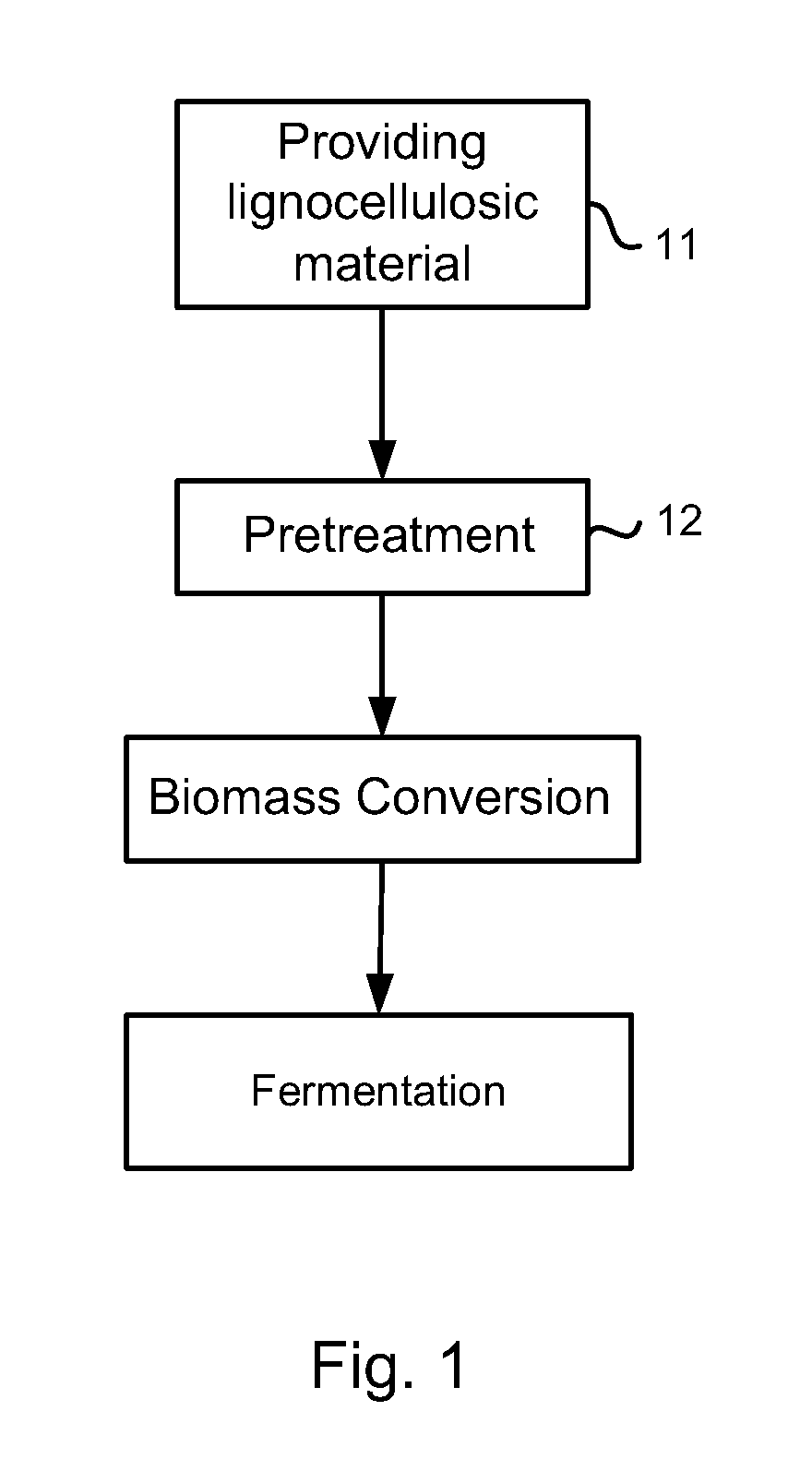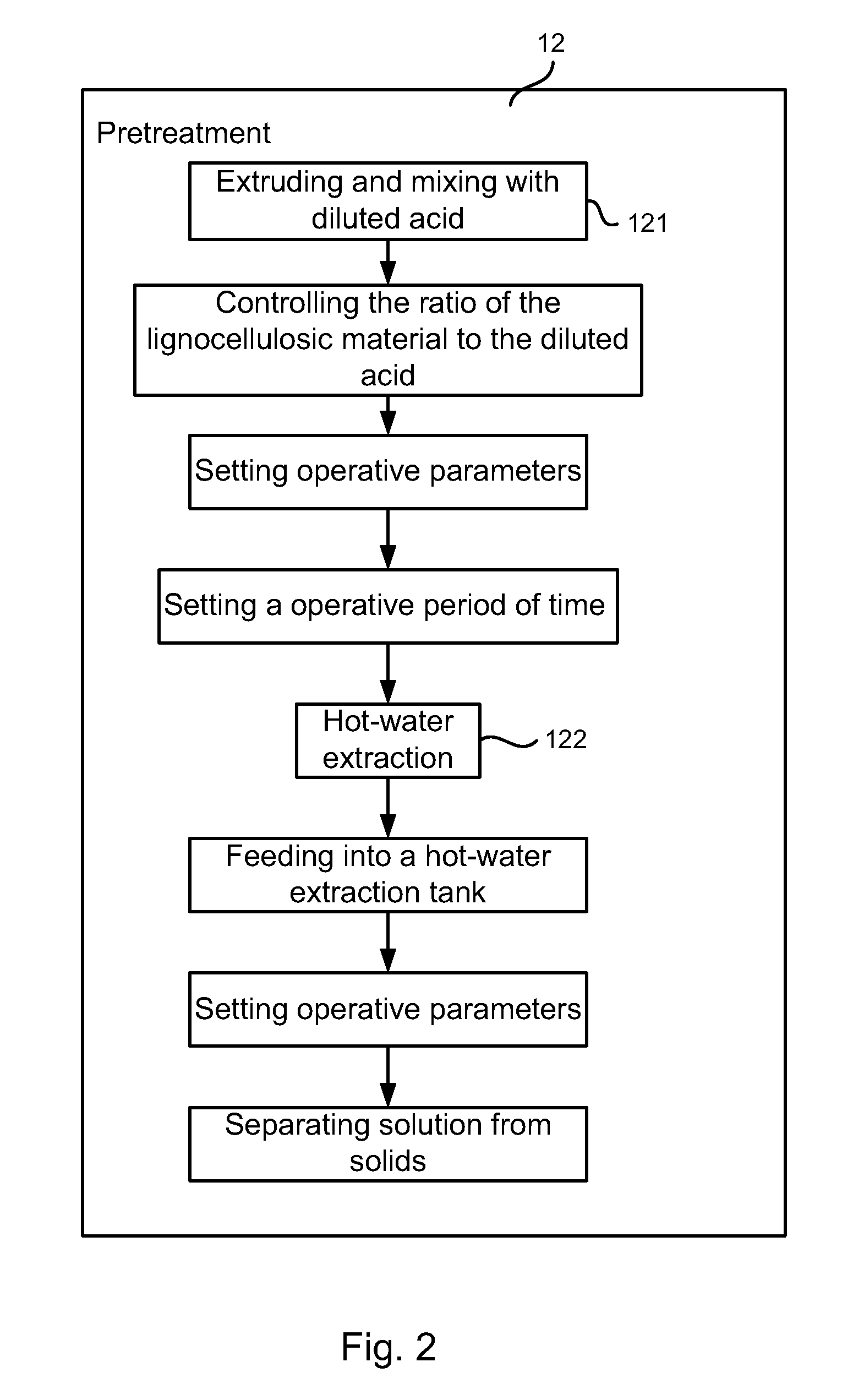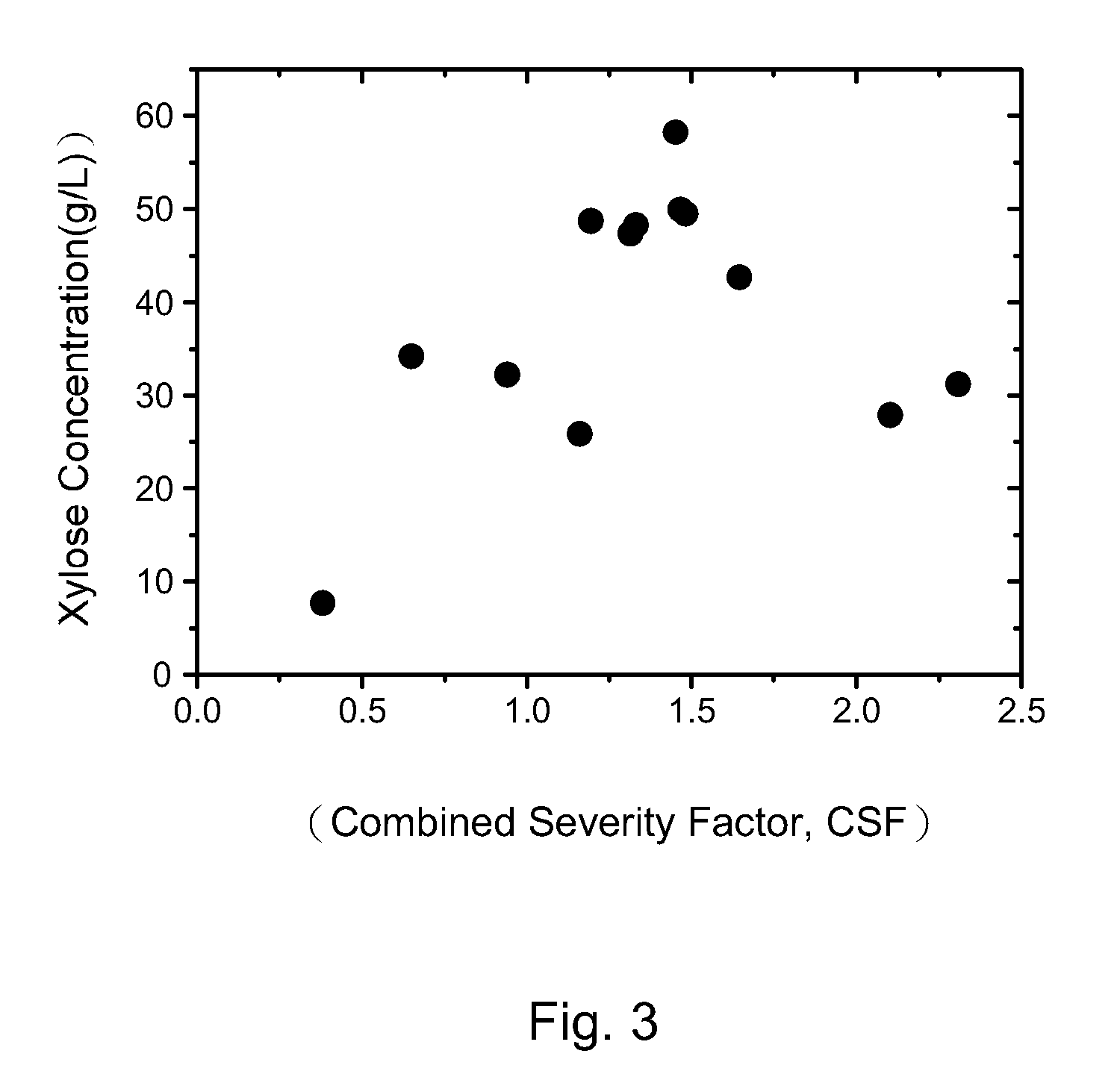Method for increasing the concentration of xylose in lignocellulosic hydrolysate
a technology of lignocellulosic hydrolysate and xylose, which is applied in the direction of papermaking, multi-stage pulping process, non-fibrous pulp addition, etc., can solve the problems of inability to commercialize bio-ethanol from lignocellulosic material, the choice of pretreatment technology heavily influences the cost and performance of subsequent hydrolysis and fermentation processes, and the cost is increased, taking economic and environmental protection into account, to achieve the effect of increasing
- Summary
- Abstract
- Description
- Claims
- Application Information
AI Technical Summary
Benefits of technology
Problems solved by technology
Method used
Image
Examples
Embodiment Construction
[0017]Referring to FIGS. 1 and 2, there is shown a method for increasing the concentration of xylose in lignocellulosic hydrolysate according to the present invention. At 11, there is provided lignocellulosic material of a proper size.
[0018]At 12, pretreatment is conducted on the lignocellulosic material. In detail, at 121, the lignocellulosic material is continuously extruded and mixed with diluted acid to break the structure thereof. The extruding and mixing is done with a machine described in Taiwanese Patent Application No. 097100129 for example. The weight ratio of the lignocellulosic material to the diluted acid is controlled via regulating the feed rate of the lignocellulosic material and the flow rate of the diluted acid. A screw is operated at a predetermined rotational speed for a predetermined period of time to produce an intended amount of mixture.
[0019]At 122, the mixture is fed into a hot-water extraction tank. A proper amount of steam is introduced into the hot-water ...
PUM
| Property | Measurement | Unit |
|---|---|---|
| barrel temperature | aaaaa | aaaaa |
| temperature | aaaaa | aaaaa |
| concentration | aaaaa | aaaaa |
Abstract
Description
Claims
Application Information
 Login to View More
Login to View More - R&D
- Intellectual Property
- Life Sciences
- Materials
- Tech Scout
- Unparalleled Data Quality
- Higher Quality Content
- 60% Fewer Hallucinations
Browse by: Latest US Patents, China's latest patents, Technical Efficacy Thesaurus, Application Domain, Technology Topic, Popular Technical Reports.
© 2025 PatSnap. All rights reserved.Legal|Privacy policy|Modern Slavery Act Transparency Statement|Sitemap|About US| Contact US: help@patsnap.com



